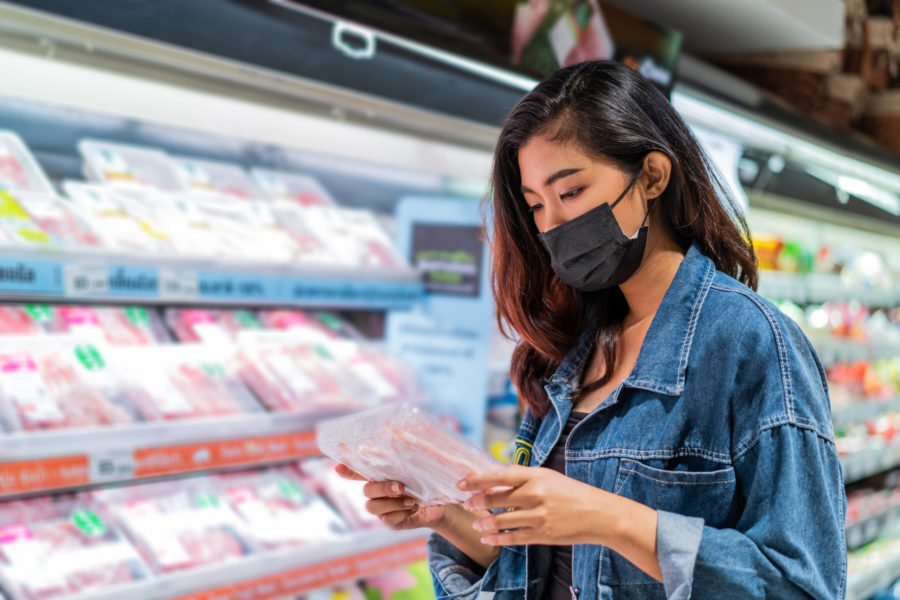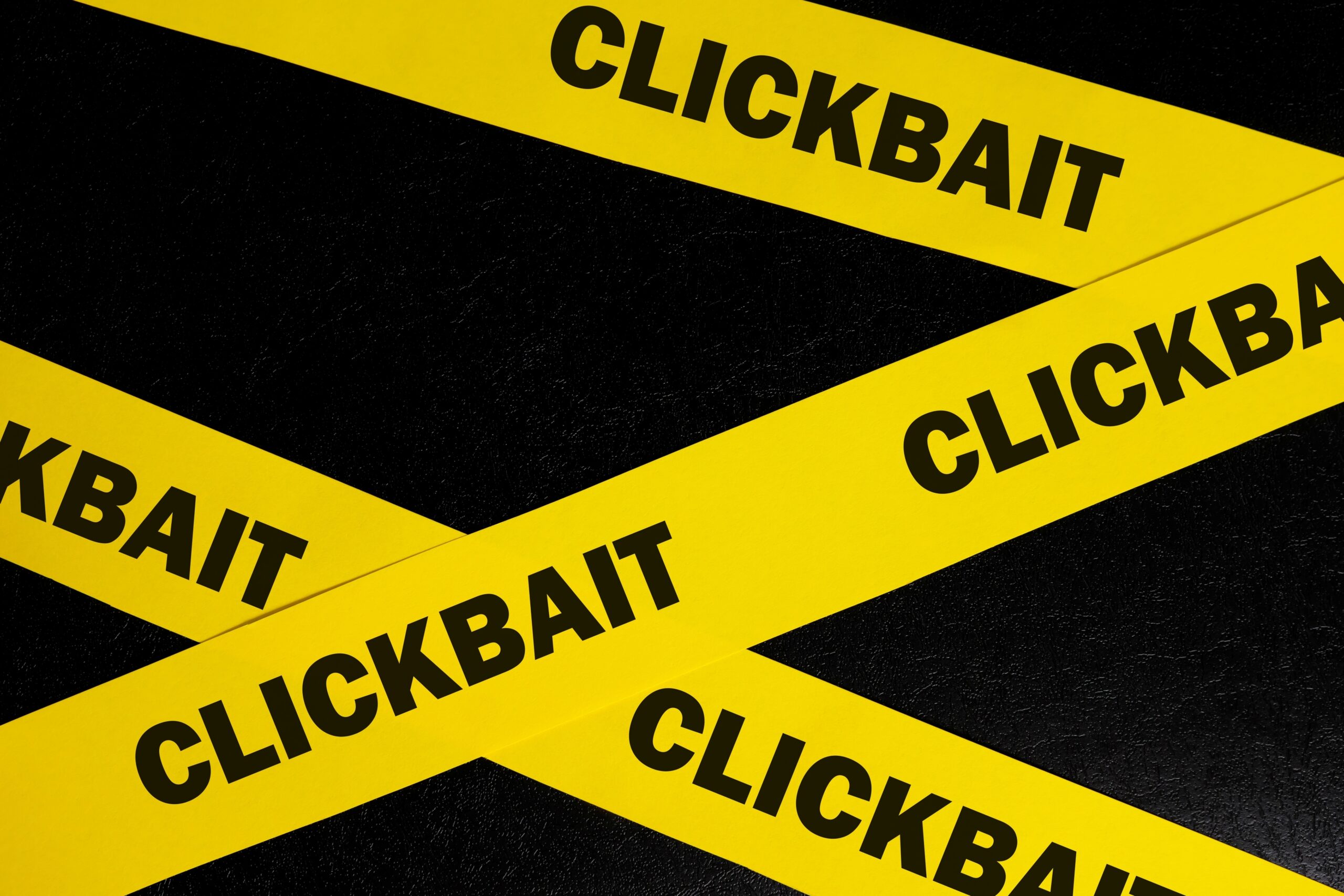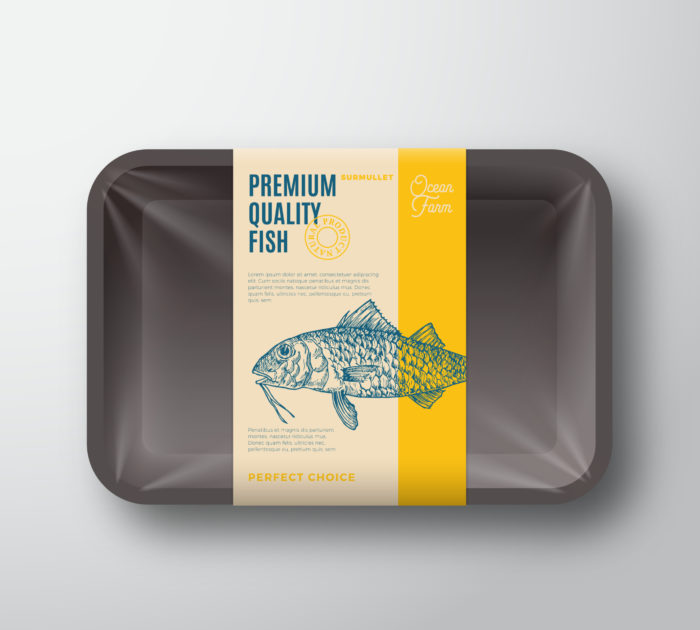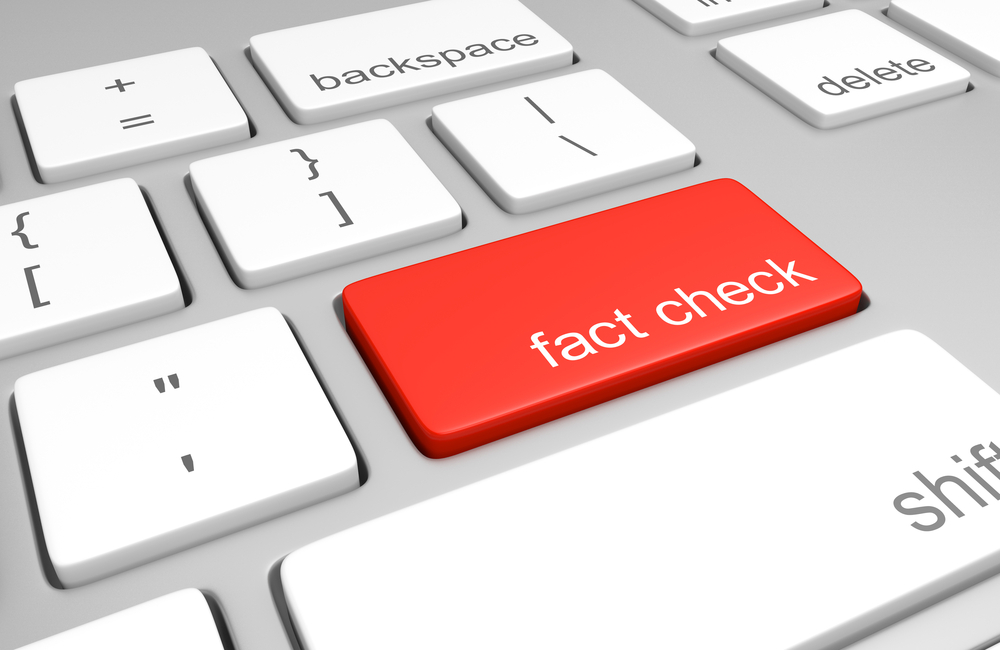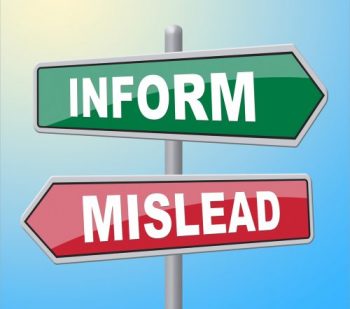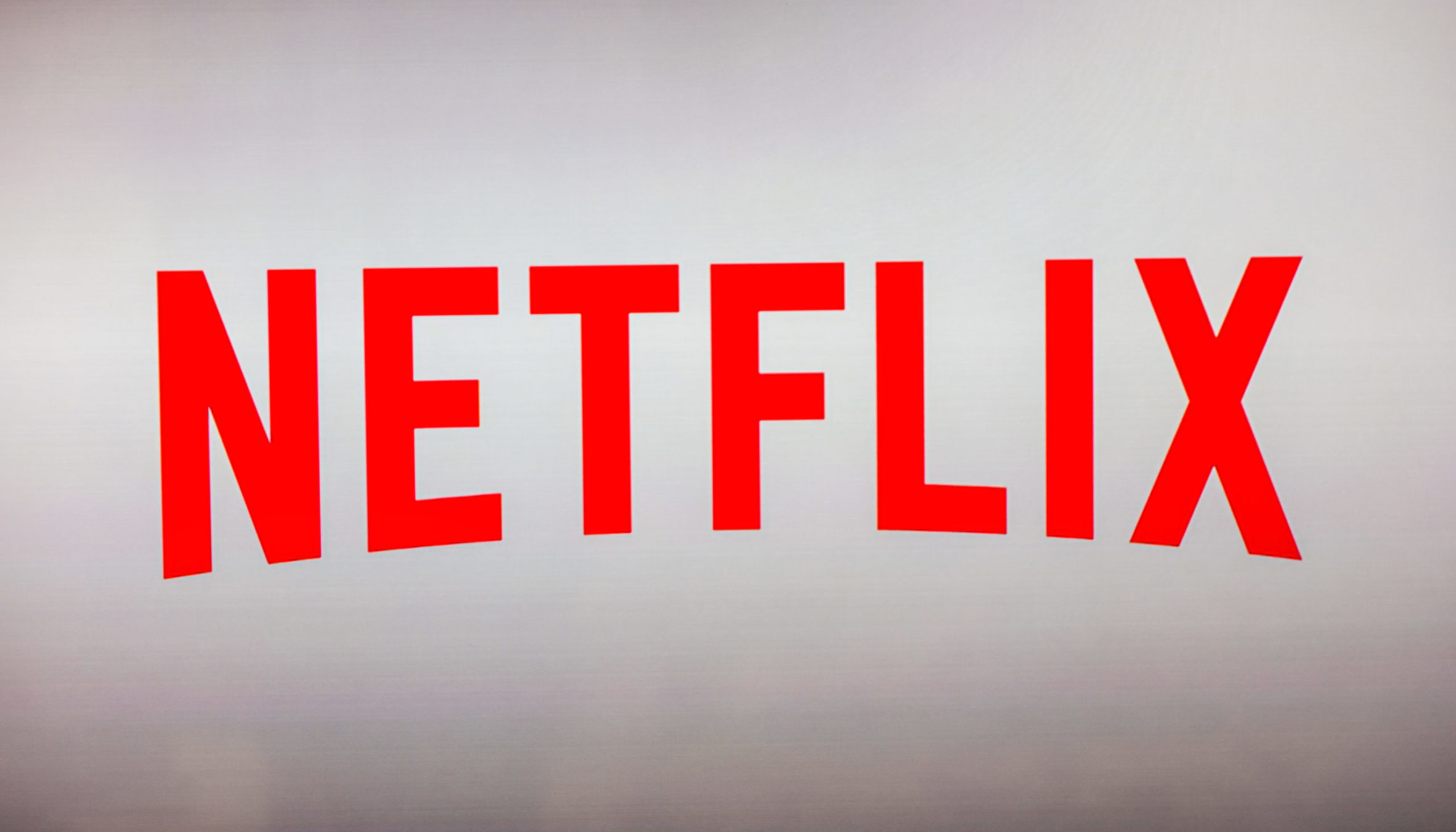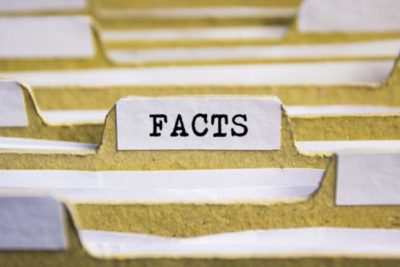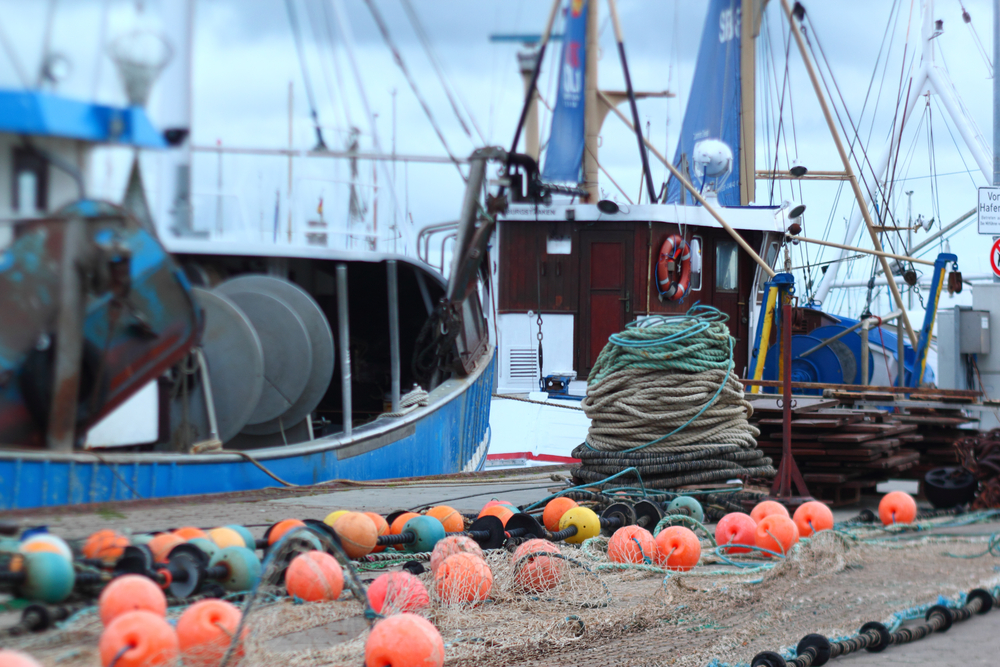All posts by NFI Media
Plant-Based Seafood Needs Accurate Labeling
Read NFI President John Connelly’s Op-Ed published on November 11, 2021, via IntraFish, below:
I’ve read with interest and some puzzlement the back-and-forth chat about the labeling of plants as seafood. It is an important discussion, and one folks in the dairy industry did not have 15 years ago.
I majored in history in college (yes, leading NFI is where a College of the Holy Cross history degree lands you). Consequently, I firmly believe in Santayana’s saying: “Those who cannot remember the past are condemned to repeat it.”
So, let’s look at some history and sprinkle in relevant data and facts. Nielsen numbers show sales of non-dairy “milks” have risen more than 23 percent since 2015, while sales of real cow’s milk have fallen. Plant-based alternative beverages now account for about 13 percent of total “milk” sales in the United States.
The current regulatory argument being made is that the US Food and Drug Administration (FDA) has allowed the facsimiles to be labeled as “milk” for so long that the term itself has become the common name.
All this, despite the fact that FDA’s standard of identity for milk clearly states the product must “come from a healthy cow.” And to paraphrase former FDA Commissioner, Dr. Scott Gottlieb…almonds and soy don’t have teats.
Currently, plant-based product labeling is governed by a ‘label it until they tell me I can’t’ mentality
I have been bemused when reading comments from those who do not invest in NFI but seek to explain what they think our policies and positions are. I tend to pay more attention to those whose signature is on the bottom right of that paper I earn every two weeks.
Let me be the one to share our position: NFI has publicly and repeatedly stated that plant-based foods are an important innovation and serve a population segment looking for alternatives. Heck, some of our leading companies are investing or partnering with plant-based businesses. What NFI has clearly stood for over the years is equal regulatory and labeling treatment of all foods to avoid consumer confusion.
NFI members must adhere to a 5,000-word-seafood-labeling regulation designed to ensure consumer confidence and guarantee shoppers are provided an accurate description of the product they’re purchasing.
Currently, plant-based product labeling is governed by a “label it until they tell me I can’t” mentality. This is a plant-based seafood executive’s version of disgraced Theranos founder Elizabeth Holmes’ “fake it until you make it” strategy.
Here’s the bottom line — NFI’s members do not want to risk labeling lunacy that could affect seafood sales in 2030 because of inaction in 2021.
I tend to pay more attention to those whose signature is on the bottom right of that paper I earn every two weeks.
Some commenters have suggested that people fully know they are not buying seafood when choosing plants disguised as fish. Actual data shows otherwise.
A study conducted by the consumer research firm FoodMinds found between 29 and 35 percent of consumers surveyed believed plant-based seafood products contained real seafood.
An additional 6-8 percent were simply unsure what they contained. For NGOs and others that demand consumer transparency, where is the outrage that companies are deceiving American shoppers? Is it because these new products are currently having a glow-up?
The FoodMinds research looked at the health and nutrition of seafood and plants as well. And while three of the five plant-based alternative seafood products featured were less nutritious than their real counterparts (less protein, more total and saturated fat, and more
sodium), between 55-59 percent of consumers thought they all had similar nutritional content to actual fish. Where are the demands for transparency from public health groups that seek a healthier diet for Americans?
Then there’s the question of intent. Are some companies intentionally mudding the waters with confusing labeling? If they weren’t trying to confuse consumers, why not just tell them what’s in the package? “Mushed Veggies Pressed Into a Shape” may not be a marketer’s dream – but at least it would be accurate.
As history would suggest, the FDA needs to act on labels before they become a common name. Data shows consumers do not know what is in these packages. Facts show many of these products are nutritionally inferior. Is it any wonder these fakes hide what they actually sell?
Great companies are built on innovation.
Shady companies are built on confidence games. So, is this the “wrong fight” to engage in? Absolutely not. Fair treatment under the law is a cornerstone of a democratic system. Fair treatment of consumers is just good business sense.
Latest News
Hey…Where’s The Fish?
This article was originally published in Urner Barry’s Reporter Quarterly Magazine.
Picture this. You’re strolling through the frozen seafood aisle of your grocery store in search of some delicious, nutritious seafood. You find two products side by side, but there’s a problem. The label tells you nothing. You can’t tell which product is made with the healthiest animal protein on the planet or which contains a mix of plants and vegetables that are shaped to look like seafood. Why is that?
Vegan, plant-based and vegetarian versions of “meat” products have been popular for some time. The veggie burger, “tofurky,” and meatless “chick’n” strips can be found at grocery stores nationally. Now, so called plant-based seafoods parade around as “vegan shrimp,” or “Toona,” seeking footholds in the marketplace – and confusing customers.
Many of these highly processed, plant-based brands market themselves as “seafood alternatives” as well as claim to have the same nutritional benefits as the seafood products they mimic. They don’t. In fact, they often lack key nutrients such as protein and omega-3 fatty acids. Let’s not mince facts. These “alternative” products violate Food and Drug Administration (FDA) labeling requirements. The FDA’s existing requirements state that nutritionally inferior substitutes must be labeled as “imitation.” Mislabeling food is a serious infraction and can harm consumers both by depriving them of expected nutritional benefits and by possibly exposing them to food allergies. The FDA statutes state labels that are misleading in any way are regarded as “misbranded.”
National Fisheries Institute (NFI) members – the nation’s largest seafood producers – properly label and ensure that thousands of commercial seafood products meet FDA’s strict requirements. For instance, blended seafood products made primarily with fish protein are known as – and lawfully labeled – “crab flavored seafood, made with surimi, a fully cooked fish protein” or “imitation crab.”
This is one blunt example of how actual seafood purveyors are required to label a product made with actual fish protein as “imitation.” At the same time, the FDA refuses to enforce such a requirement on highly processed, plant-based alternative products designed and marketed to imitate fish without containing any fish protein. Let’s be honest here, just because you spell tuna as “toona” doesn’t mean it’s fish.
A study by consumer research firm FoodMinds showed that about 40 percent of consumers believed plant-based imitations contain actual seafood. Up to 60 percent thought the products had similar nutritional content as real fish. Still, fake-seafood producers are resisting more accurate labeling, and without any evidence claiming that customers know what they are getting.
To push consumer confusion further, companies offering plant-based seafood imitations continue to double down on the vegan fish nutrition claim. Some are bold enough to claim a highly-processed vegetable mash that attempts to imitate raw tuna is healthier than real tuna. Are vegetables nutritious food? Sure. Do they come close to the complex offering of protein, vitamins, minerals, and fatty acids in tuna? Any reputable doctor or dietitian will tell you the answer is, no.
Americans simply don’t consume nearly enough seafood. About 90% do not meet the U.S. Dietary Guidelines directive to eat seafood twice per week. Any suggestion that consumers should steer clear of seafood for nutrition reasons further exacerbates this problem.
Plant-based products are innovative, and we hope they will contribute to feeding a growing world. They have a place on menus and in stores. However, the nation’s lead food safety regulator for seafood has a fundamental obligation to protect and inform American families about the food they eat. Banners like “Vegan Lobster” appear to tell shoppers what’s not in the package.
The solution is clear: FDA must enforce its existing labeling requirements. Labels must follow existing requirements and meet the same labeling standards imposed on actual seafood products.
If seafood products must meet FDA requirements to distinguish among different fish, then surely a product made of konjac powder, pea starch, and fenugreek should not be allowed to be labeled, “smoked salmon.” American consumers deserve factual and clear labels on the foods they buy, and they deserve this now. Not years from now.
Latest News
Something’s fishy about labeling plant products as seafood
Read Guy Simmons’ Letter to the Editor published June 10, 2021 on NJ.com, below:
Seventy percent of seafood consumed is sold in restaurants. Or, at least that was the statistic before the pandemic arrived. It was March 2020 when New Jersey’s seafood sector witnessed a truly terrifying combination of events as both sides of our supply chain and everything in between seized up.
Restaurants closed, processing slowed, distribution ground to a halt and boats remained tied up. If it weren’t for resourcefulness, ingenuity and even federal funding, New Jersey seafood wouldn’t be rebounding the way it is.
But, just as the industry claws its way back as restaurants reopen and producers look to make inroads in retail, there’s a new challenge: plant-based, imitation seafood products which many in our industry believe are mislabeled.
Attention friends, neighbors and the U.S. Food and Drug Administration: there’s no such thing as “vegan clam strips.” And, just because you spell tuna as “toona” doesn’t mean it’s fish.
For years, regulators have looked the other way as almond drinks were mislabeled as “milk” and now they seem not to understand that the sea makes seafood, not mashed up, processed vegetables.
You want to be a vegan? Be my guest. But, in the process, accurately label vegan food. Better yet, how about if the FDA were to follow its own rules and regulations about misbranded products?
Guy Simmons, Senior Vice President, Sea Watch International/TMT Clams, Atlantic City
Editor’s note: Sea Watch International, headquartered in Atlantic City and Maryland, with its subsidiary, TMC Clams, is among the nation’s largest harvesters and processors of domestic clams.
Latest News
The Number One Reason Why You Shouldn’t Listen to Sarah Crow
Who’s Sarah Crow, you ask? To be honest… no idea.
But she wrote an article for the “esteemed scientific journal” Eat This Not That titled The #1 Reason Why You Shouldn’t Eat Salmon, According to Science. And Sarah’s research, that she conducted with the help of “science,” warns if you eat salmon you could be, “consuming a shocking amount of dangerous microplastics along the way.”
The truth is, the very latest research on microplastics consumption concludes humans consume less than a grain of salt of microplastics per week. What’s more, the study found fish rated the lowest impact, based on these food categories: fish, mollusk, crustacean, tap water, bottled water, salt, beer, and milk. The modeling was based on existing published studies and WHO and FAO food consumption data.
Likewise, studies show humans ingest more microplatics from breathing than they do eating seafood and no heath professional would suggest people breathe any less than they do now.
Keep in mind; a shocking amount of microplastics.
Dr. Dariush Mozaffarian, formerly a professor at Harvard Medical School and the Harvard School of Public Health (now at Tuffs), when talking about mercury in seafood, told Time Magazine “I know I sound like I’m trying to downplay the risk but I really think we are experimenting with people’s lives when we give recommendations or write stories or reports that make people eat less fish.”
The impact of Sarah’s story is not a public health benefit; it’s likely less consumption of the healthiest animal protein on the planet… and that’s the number one reason why you shouldn’t listen to Sarah Crow.
Latest News
Seaspiracy: Recognizable Propaganda
The concern with some slickly produced propaganda pieces, masquerading as “documentaries,” is that audiences will not recognize the film’s true agenda. Despite the artistic aerial shots, exciting albeit hyperbolic cloak-and-dagger scenes and stirring action-movie like sound track, there is little concern Seaspiracy will be mistaken for anything but a vegan indoctrination movie.
The film begins by suggesting, without evidence, that fisheries bycatch is an issue “governments [have] practically given up on enforcing.” Then touts a narrative that an “internationally recognized seafood label [is] a complete fabrication.” All this before whipsawing viewers from the argument that getting rid of plastic straws was once considered a pollution fix but that now the only real solution is getting rid of the entire commercial fishing sector.
Before long the producers describe a fishing vessel with the caveat that, “what it really is, is a death machine.” They then dive headlong into an embrace of the idea that the oceans will be empty by 2048, which is based on a completely debunked 2006 statistic, refuted by none other than the author of the original study. The 2048 statistic was put to rest by a follow-up report in the Journal Science released in 2009 under the title New hope for fisheries.
Gravitating towards the popular call to ban fishing in 30% of the oceans by 2030, the film turns to an author, who owns a vegan food company, an animal rescue sanctuary and is also apparently a dentist. His endorsement of the 30 by 30 slogan/policy is based on his calculation that, “in reality, less than 1% of our oceans are being regulated.” This is of course not only inaccurate it’s nonsensical. But it doesn’t end there. He goes on to compare choosing fish based on some eco labels to, “essentially saying it’s more sustainable to shoot a polar bear than shooting a panda.”
During a segment on Illegal, Unregulated and Unreported fishing in Africa director Ali Tabrizi claims, “In the United States up to 1 in every 3 wild caught fish imported have been caught illegally and therefor sold illegally. Stolen, often from countries in most need.” The methodology behind this wildly inflated statistic has been picked apart in the very Journal where it first appeared; “Methods to estimate IUU are not credible.” Meanwhile, papers using the same approach have been retracted. While IUU is a serious issue and unacceptable at any level, Tabrizi’s calculated film making seeks to conflate over estimated IUU numbers with U.S. seafood imports from Africa. The National Oceanic and Atmospheric Administration reports less than 2% of U.S. seafood imports come from Africa.
Before setting their sites on aquaculture, the filmmakers can’t help but slip in a vegan dog whistle in describing fishing boats they say “…It became clear these vessels were more like floating slaughter houses.”
Adeptly leading viewers down the primrose path, fish farming is lauded as a potential “method that could provide some kind of solution” before it is eviscerated with out of date tropes like the lie that farmed salmon is died pink. The film later digs up another classic in complaining about PCB’s in fish but never (ironically) mentions that Harvard University research finds seafood broadly, not just farmed salmon, makes up only 9% of the PCBs in the average American diet, while products like vegetables make up 20%. Yes, vegetables.
As the film begins its expected arch into unabashed vegan rhetoric about fish feeling pain and how, “animals… use democratic decision making,” it logs a chapter about labor abuses in the seafood space. This is a serious and concerning topic that the filmmakers bring nothing new to. While their interviews with silhouetted victims are heartbreaking, what is really on display here is, as the New York Times put it, a “cheap imitation of hard-hitting investigative journalism.”
In the end the film sputters to a close with what is essentially a predictable commercial for highly processed plant-based alternative products.
Latest News
Patagonia’s Seafood Sustainability Misses the Boat
In May of 2019, the Patagonia clothing company launched a marketing effort masquerading as an eco-campaign and they’re back at it again. People know they sell fleeces. But few know they also sell fish. Its niche salmon may be a decent product. While the company sells $700 parkas, Patagonia’s seafood sustainability almost completely misses the boat.
Wild salmon should be celebrated for its unique flavor. But attacking science-based hatcheries or well-managed aquaculture operations in the process ignores global food security needs and some of the best-managed fish stocks on the planet.
Patagonia’s Panacea?
According to the sweater maker, curtailing or closing fisheries that utilize hatcheries and shutting down aquaculture efforts is an on-ramp on the road to panacea. And perhaps it is if that road leads only to the waters frequented by fly-fishing, Patagonia-wearing sports men and women. Because without advanced hatcheries and well-run aquaculture efforts many fisheries in pristine places like Alaska would effectively shut down. Starving consumers of healthy protein and putting whole communities out of work.
Sustainability Science
Scientists and experts who understand seafood sustainability know farmed and wild fish can co-exist. There’s room in the market and a vital need for both. Campaigns that promote efforts to take wild fish only from small, targeted spots are perfect for a company whose clientele don’t mind paying $300 for a hoodie …. but it is not sustainable nor will it feed the world.
The simple fact is, we can’t take more fish from wild-capture fisheries to meet the increasing demand for seafood. Science-based restrictions are designed to ensure the sustainability of those stocks. We need hatcheries and aquaculture to feed the planet. The UN Food and Agriculture Organization estimates as many as 3 billion people rely on wild-caught and farmed seafood as their primary source of protein. According to the National Oceanic and Atmospheric Administration, “globally, aquaculture supplies more than 50 percent of all seafood produced for human consumption—and that percentage will continue to rise.”
Marketing a Myth
Trafficking in hyperbole to market an exclusive product to affluent customers, so they feel like they’re part of the solution, is not crusading for sustainability it’s marketing a myth.
Latest News
Facing Facts: Coronavirus, Food Safety and The Media
Coronavirus is a deadly pandemic that should be taken seriously. There is no question about that. However, how the media reports on it and the studies that purport to offer insight into it need to take the same sober and detailed approach or risk presenting misinformation.
A new Fox News headline announces Live coronavirus found on meat, seafood weeks later, researchers say.
Let’s unpack this
For starters, the report out of Singapore and Ireland is not peer reviewed. It also does not conclude that anyone anywhere has ever contracted coronavirus from food or food packaging. Instead, it notes the work simply examines a “hypothesis.”
In fact, the new report itself states clearly, “it can be confidently argued that transmission via contaminated food is not a major infection route.” But experts at the World Health Organization go a step further when they note there is “no evidence to date of viruses that cause respiratory illnesses being transmitted via food or food packaging.”
“People should not fear food, or food packaging”
With no evidence, the authors of this insufficiently tested supposition insinuate that imported food may have contributed to outbreaks in certain countries. All of this in the face of WHO statements that make clear, “people should not fear food, or food packaging or processing or delivery of food.”
Writing on the most up to date and reliable science is important during this pandemic. It is irresponsible to report on research that is not peer reviewed and postulates theories far outside the study’s actual focus.
Experts Say It’s Time to Focus on Facts
Experts in Food Science, like Dr. Lee-Ann Jaykus (William Neal Reynolds Distinguished Professor, NC State University), note how important it is to keep the focus where the most good can be done; “The overwhelmingly higher and most significant mode of disease transmission is through exchange or release of respiratory droplets laden with the virus, with transmission facilitated by close contact to an infected individual actively shedding the virus. Expending resources on unsubstantiated foodborne routes threatens our efforts to focus on control strategies we know work against respiratory spread.”
Latest News
Greenpeace Report Just Fundraising Clutter
The always-effective combination of hyperbole from Greenpeace and laziness by journalists is percolating through the media with myriad stories about Greenpeace’s new report Ghost Gear: The Abandoned Fishing Nets Haunting Our Oceans.
Here’s an example of ignorant reporting fueled by activist rhetoric designed to motivate people to… clean up the oceans? No… to give money to Greenpeace.
Really Not What the Report Says
The headline screams Dumped fishing gear is biggest plastic polluter in ocean, finds report. The only problem is the report does not find that. In fact, Greenpeace’s own report finds fishing gear only accounts for 10% of plastic waste in the oceans. How is that the “biggest plastic polluter?” Ninety percent of the plastic pollution comes from other sources and yet the headlines read Fishing crews to blame for much of the plastic in the world’s oceans, Greenpeace says.
On one page the report even illustrates the issue with a large photo of a crab apparently trapped in a plastic drinking cup. Unless there’s been a drastic change in crab fishing strategy, that we’re not aware of, plastic drinking cups are not fishing gear.
Greenpeace Late to the Party
As usual, Greenpeace is late to the party and attempting to raise money for itself off an issue that literally dozens of other NGO’s, corporations and institutions have been focused on. Efforts to promote technologies and enterprises that turn plastic fishing waste into valuable resources are underway and entire summits are devoted to technological innovation focused on solutions to prevent gear from entering the oceans in the first place.
Just More Clutter
Greenpeace’s latest fundraising report is just more clutter.
Latest News
Consumer Reports Inches Closer To Accuracy
Consumer Reports is out with its new Guide to Healthy Seafood Choices and the magazine, better known for ranking speakers and lawn mowers, actually stumbles onto some good advice.
Please keep in mind, the fact that editors at Consumer Reports have read and regurgitated widely available and understood advice on seafood does not make the publication a genuine health and nutrition resource by any stretch of the imagination. But for a publication that has so fundamentally botched this type of advice in the past at least it shows an evolution towards mainstream science and away from tinfoil hat wearing, precautionary principal nonsense that was doing more harm than good in the nutrition space.
Consumer Reports highlights
- “Fish is loaded with nutrients that are crucial for healthy aging”
- “And it has more vitamins B12 and D—necessary for brain health and bone health, respectively—than any other food you can eat”
- “To get the health benefits of omega-3s, the American Heart Association recommends eating at least two 3½-ounce servings of nonfried fish per week.”
The magazine stumbles through some of its usual inaccurate clutter but there is a limited amount of evidence to suggest that its reporters are using at least some more reliable nutrition information these days.
Latest News
Lab Grown Reporting: The Future of Fish or the Land of Make-Believe
Los Angeles is called Tinsel Town because of the glitz, glamour, sizzle and style created by the hyperbole machine that is the movie business. It’s an industry that literally thrives on the magnification of made up stories. That’s why we should not be surprised that the Los Angles Magazine feature As Wild-Caught Species Vanish, Are Lab-Grown Fish the Future? is over flowing with, at times, laughable sensationalism.
The subject matter itself is fascinating and the reporting on Silicon Valley’s race to produce the first commercially viable cell-based seafood product is captivating. The narrative is even complete with competing food tech operations taking veiled swipes at each other or even overtly cursing one another. It’s quite the Hollywood tale.
But like many a movie it also has a fictional yarn woven throughout that is over the top and not true. However, unlike the silver screen, Los Angles Magazine is not asking readers to suspend disbelieve, it’s presenting it as fact.
A World Without Fish?
The reporter openly states that a world without sea bass, frozen salmon and even perhaps the most sustainably harvested wild-caught fish on the planet, Alaska Pollock, is “the future.” Calling it “joyless, hopeless, fishless.” Insisting that according to unnamed scientists the “fish apocalypse” is upon us and apparently, only lab-grown fish can save us.
Only in Hollywood do those types of nonsensical over-statements make it to print without any editorial oversight.
The topic of cell-based seafood and feeding the masses is an interesting and important one and deserves to be explored, but factual reporting about seafood sustainability should be included in that dissection.
A Blockbuster Beginning
The article starts by giving readers insight into the legitimately troubled sustainability story of the Bluefin tuna, a sushi delicacy that sells for hundreds of dollars per pound, 80% of which is consumed in Japan. That’s like profiling gas mileage concerns for U.S. commuters… but only ones who drive the Lamborghini Aventador. Bluefin is far from the poster child for seafood sustainability, but it’s also not close to your average seafood meal.
Ironically, Alaska Pollock is the quintessential seafood meal – found in fish sticks at the grocery store to fish fillets sandwiches at quick service dining, but here Los Angles Magazine sticks to its the sky is falling narrative insisting, inexplicably, that pollock’s days are numbered and depletion and extinction are perhaps inevitable. Simple research would find that U.S. regulators publically recognize that Alaska Pollock is not overfished and actually maintains populations above the target levels. What’s more the fishery is cited for having “minimal impact on habitat” and is called “one of the cleanest” in terms of bycatch. Yet over and over the sustainability screenplay insists on a death knell for this fish.
Mid Movie Yawn
To add to the bleak profile of seafood, the article attacks aquaculture making lazy, inaccurate assertions, like: farmed salmon is dyed with artificial colors. It is not. In fact, CNN’s Chief Medical Correspondent, Dr. Sanjay Gupta, devoted an extraordinary amount of time and research into an expose for 60 Minutes about farmed salmon where he explained that the “dyed” salmon narrative was simply a myth that needed rebutting: “It’s not accurate to call these artificial dyes. I think people conjure up this image of the farm salmon being injected with something that causes it to turn that pink color. That’s not what’s happening here. It’s a much more natural occurring process where the farmed salmon eat a type of food that causes a reaction in the body, just like the wild salmon does, and that causes that more pinkish color.”
The perennial PCB’s in fish “concern” is regurgitated as well. The reality is that Harvard University research finds seafood broadly, not just farmed fish, makes up only 9% of the PCB’s in the average American diet, while products like vegetables make up 20%. Would Los Angles Magazine suggest its readers eat fewer vegetables?
Just the Facts Ma’am
The National Oceanic and Atmospheric Administration reports that 91 percent of the stocks it manages are free from overfishing and a study in the Proceedings of the National Academy of Science illustrates how 82% of the fish we actually eat come from sustainable stocks. Meanwhile, despite challenges, the UN calls the fisheries sector “crucial” to meeting its “goal of a world without hunger and malnutrition.” These facts are left out of this article.
Is it possible to write about the issue of cell-based seafood production without inaccurately suggesting the oceans are almost empty and this fantastic technology is the only hope for a future with fish? It’s possible, but the script doesn’t quite sizzle as much. Perhaps Los Angeles Magazine has forgotten that facts, not fiction, are the cornerstone of journalism.
